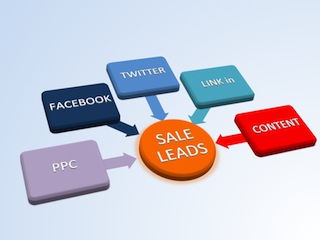
Have you ever experienced subscribing to a magazine you’ve recently discovered? You filled out a form, sent it back to the publication, expecting to have more issues on your doorstep?
Well, that act of your signing up is what can be considered as lead generation for the publishing company. At this point in time though, lead generation comes in a lot more forms than just magazine subscription.
For this post, I’m going to talk about the basics of lead generation: its definition, how to do it right and things you need to remember.
I suggest you take note of this so you won’t have to waste your time, efforts and money on lost causes (or should I say, clients).
What is Lead Generation?
Before we proceed to its definition, I’d like to clear out a very common misconception about lead generation. Marketers consider it as a tactic to get more customers. The truth is lead generation is an effect, not a tactic in the realm of inbound marketing. It is your content, social media utilization and SEO that should be defined as your tactics. Now, let’s proceed to the definition.
Think of leads as potential clients that can turn into a closed sale. In the world of telemarketing, these are the people agents call again to solidify as sale. In online marketing, lead generation is the step that precedes sales closing. Its purpose is to attract and accommodate client inquiries and generate customer interest.
How Does It Differ Now?
My example earlier about magazine subscriptions is actually one of the very first ways to generate leads. Nowadays, marketers no longer have to set up a booth and print out forms to interest people. All they have to do is buy a list of leads, have it generated by professionals and voila! They now have a target market to find potential customers in.
Where Do I Generate Leads?
Now that we’re talking about the latest way to generate leads, there are three areas online where you can practice it. You can read about these below.
1. Pay-per-clicks/ Paid Advertising
If you have a pretty good budget, you can invest on PPC to garner more leads. This is especially beneficial to those who don’t have enough time to create a lot of content yet. Paid advertising are spot on Facebook ads, YouTube ads and other banner ads in various websites.
2. Social Networking Sites
A study conducted by HubSpot found that LinkedIn (2.74%) generates leads 3 times higher than Facebook (.77%) and Twitter (.69). While LinkedIn can definitely be a great asset for other businesses to find yours, I still highly recommend not overlooking the power of Facebook, Twitter and other social networking sites.
3. Online Content
This is where blogs, webinars, articles come into play. It is the area where you can meet different people who comment and engage in conversation with you. You can definitely generate leads here since you are able to start relationships with the people who are interested with what you have to show and tell.
How To Do It Right
Once you know where to generate leads, it’s important to know how to do it right. To make it simple for you, I’ve listed below a few questions for you to realize if you’re covering the right ground.
1. What do your customers want?
One thing you need to remember before you even sell anything is to know what your potential clients want. What are their wants, needs and desires? Don’t stop there. Find out what their doubts or fears may be, what could be stopping them from purchasing something from you.
2. What can you do about it?
Now that you know what their thoughts are, it’s time you invest on it. The fact is they’ve already raised what they want and need. All you have to do is give them a something to hold on to; tips, solutions, even ideas for them to realize you can satisfy them.
3. How do you intend to do it?
Say for instance you want your potential customer to subscribe to your website. How can you do it effectively? This is where online marketing tools are needed: SEO, ads, blogs, social media, etc. Just keep in mind how to pull off your concept and execution well enough.
4. How can you make them want it?
An integral component of lead generation is building trust. You can’t have someone subscribe to you or patronize what you sell without them trusting you first. This is how you can make them want whatever it is you’re selling. It is through their peace of mind that they will want to push through with your products/services.
What Are The Things I Need to Remember?
The final lesson I’m going to share with you here are the two things you need to keep in mind about lead generation. Apart from knowing where and how to do it right, you need to bear these factors in mind:
Budget
It’s a cardinal rule that you should never spend more than what you earn. Even in lead generation, you should know how much you are willing to invest. Depending on the difficulty of obtaining leads, prices can range from $5-$25 each.
Quality
As someone who should know the value of time, effort and money, you need to concentrate on getting good quality leads rather than many but poorly-targeted ones. Make sure you are working with a good agency that can filter well and can give you leads that are most likely to be closed as sale.
Now that you have a good understanding of what lead generation is, it’s up to you to apply what you’ve learned. Don’t worry, you can easily go back to this guide just in case you need a little 101 again.
